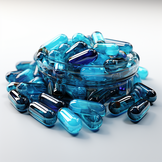Treatment options for erectile dysfunction and impotence.

Understanding Erectile Dysfunction and Impotence
Erectile Dysfunction (ED), commonly known as impotence, is a prevalent male sexual disorder characterized by the persistent inability to achieve or maintain an erection adequate for sexual intercourse. This condition can cause significant distress, affecting self-esteem, relationships, and overall quality of life. The causes of ED can be psychological, such as anxiety and depression, or physical, including heart conditions and blood pressure problems.
Working with Healthcare Professionals
Assessing the Underlying Cause and Severity of ED is a crucial initial step in the management of erectile dysfunction. A healthcare professional typically carries out this process via physical examinations, blood tests, and a thorough review of your medical and sexual history. It helps determine the root cause of ED and provides an idea of its severity, both of which are pivotal for designing a tailored treatment plan.
Moreover, Considering Personal and Partner's Preferences is vital. Since ED affects both the individual and his partner, it's essential that both their preferences be taken into account when selecting a treatment plan. Some couples may prefer non-invasive options, while others might be open to more invasive treatments if necessary.
Penile Injections for ED Treatment
Penile injections involve injecting medication directly into the penis, which increases blood flow, facilitating an erection. While effective for many men, the thought of a needle might seem intimidating, and misuse can result in damage to penile tissues.
Intraurethral Medication for ED Treatment
Intraurethral medications represent another less invasive treatment option for ED. Here, a man inserts a small medicated pellet into the urethra. The medicine helps increase blood flow to the penis, leading to an erection. Despite its effectiveness, some men may find the procedure uncomfortable or experience minor side effects.
Sex Therapy as an ED Treatment
Addressing Anxiety and Depression can be beneficial for those whose ED is primarily rooted in psychological issues. Sex therapy focuses on psychological and emotional aspects, such as stress, anxiety, and depression, which can significantly contribute to ED. It can be an effective treatment, especially when used in conjunction with other methods.
Oral Medications for ED Treatment
Phosphodiesterase Type-5 Inhibitors are the most common first-line treatment for ED.
These include Sildenafil (Viagra), Tadalafil (Cialis), Vardenafil (Levitra), and Avanafil (Stendra).
They work by relaxing the smooth muscles in the penis, thereby enhancing blood flow and facilitating an erection in response to sexual stimulation.
While oral medications are highly effective for many men, they do come with Potential Risks and Interactions with Nitrates. These drugs can lower blood pressure, potentially leading to a significant drop in blood pressure when taken with nitrates, commonly used to treat heart conditions. Therefore, men who take nitrates should not use these medications.
Vacuum Devices for ED Treatment
Vacuum devices, often termed penis pumps, are another non-surgical option for treating ED. They work by creating a vacuum that draws blood into the penis, causing an erection. A constriction band is then placed at the base of the penis to maintain the erection. Despite being a bit cumbersome to use, these devices are generally effective and safe.
Surgical Treatment Options
For men who haven't found success with other treatments, surgical options are available. Penile Implant Surgery involves the placement of a device in the penis that allows men to control their erections. Though highly effective, surgery comes with risks such as infection or mechanical failure.
Artery Reconstruction is another surgical option, but it's usually reserved for younger men who've suffered physical trauma leading to ED. It involves repairing the blood vessels to restore proper blood flow to the penis.
While answering the question of the fastest way to cure erectile dysfunction, it's crucial to understand that ED treatment is a process. Different treatments work at different speeds, but it's about finding the right, sustainable solution rather than seeking a quick fix.
As for the new treatments for erectile dysfunction, ongoing research focuses on innovative methods like stem cell therapy and low-intensity extracorporeal shock wave therapy. While promising, more research is needed to establish their safety and efficacy fully.
In conclusion, managing erectile dysfunction is a personalized process that involves exploring various treatment options, from oral medications to surgical interventions. It is important to have open discussions with healthcare professionals and consider both personal and partner's preferences when deciding on a treatment plan. There's no one-size-fits-all solution, but with patience and persistence, most men can find an effective treatment for their ED.



